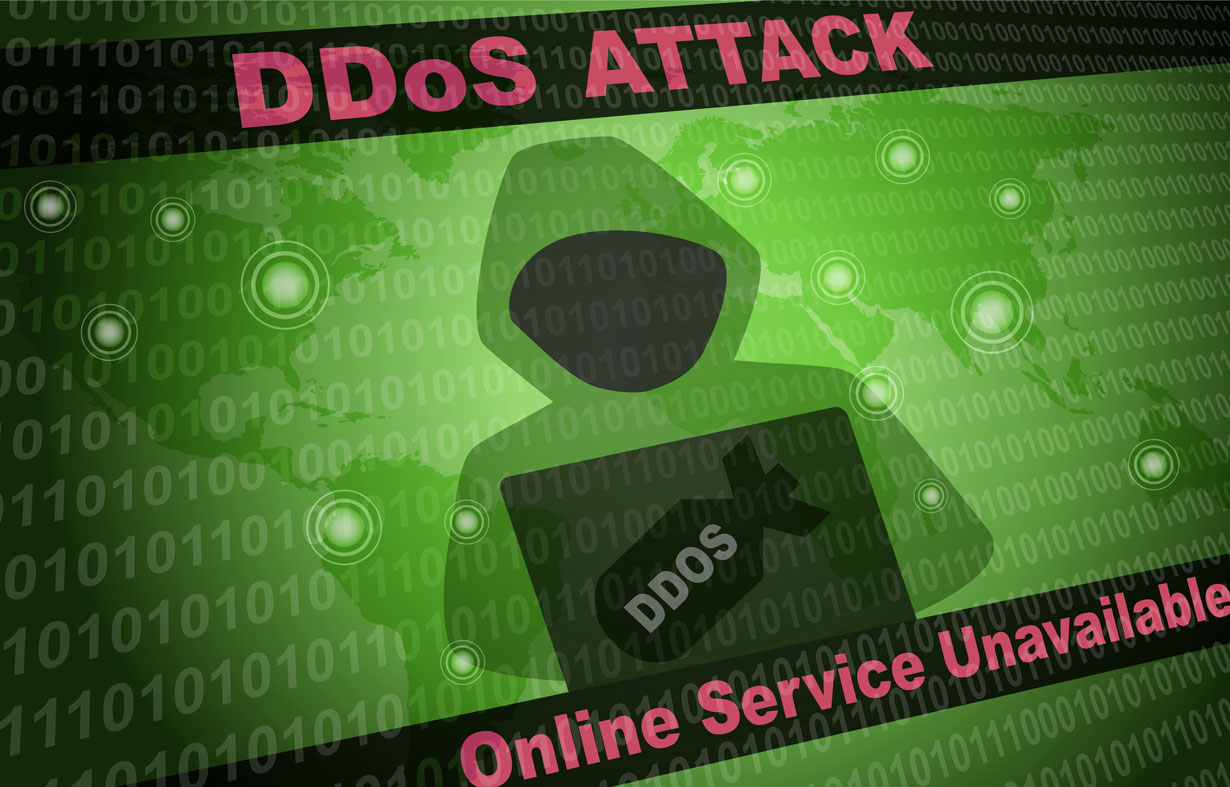Is Your Data Center Ready For A Zombie Invasion?

Zombies and botnet armies might seem more suited to the science-fiction future, but they’re actually part of our perilous present. Compromised computers and malware-infected IoT devices make up the millions-strong zombie and botnet armies of the Internet that are used to carry out hundreds of thousands of distributed denial-of-service (DDoS) attacks each year.
While political groups and “hacktivists” are behind many of these DDoS attacks, not all perpetrators are sophisticated cyber terrorists. In fact, if you have an Internet connection and $150, you can order an anonymous week-long DDoS attack against the target of your choice as easy as ordering a DoorDash delivery.
How Does A DDoS Attack Work?
A DDoS attack is an evolution of the traditional denial-of-service (DoS) attacks that first appeared in the 1990s. Both DoS and DDoS attacks share the same objective—to tie up a server’s or application’s resources by bombarding it with requests—but where a DoS attack originates from a single source, a DDoS attack uses multiple (sometimes millions of) sources. This distributed approach is an important distinction because it makes it much harder for security teams to pinpoint and block the source of a DDoS attack since it so closely mimics regular traffic.
DDoS attacks can take a variety of forms. They can target a specific website with page requests or even a specific URL by inundating the Domain Name Server (DNS) with requests, in effect shutting the website down. They might also target a specific firewall or gateway to block legitimate traffic from reaching the server. Or they may flood the network with so many requests that bandwidth to the server is exhausted. In each example, the result is more or less the same: the website or server becomes unavailable to customers and employees until the attack has ended.
How Can Businesses Protect Themselves Against DDOS Attacks?
At first glance, a DDoS attack might seem like a minor nuisance. In today’s digital world, however, having your website shut down for hours or even days is like shutting down your entire business. The costs of a DDoS attack are both tangible (e.g., lost revenue from e-commerce sales) and intangible (e.g., lost trust and brand reputation because of poor security measures). And the number of DDoS attacks has been rising. Between 2020 and 2021, the number of reported DDoS attacks grew by more than 300%. Factor in the low investment needed to mount an attack and the potential financial gain from blackmail, and it’s clear that nearly every business with an online presence is a potential target.
Is there anything you can do as a business to prevent or stop a DDoS attack? Yes, there is. The first step is to be able to detect a DDoS attack as quickly as possible. Today’s DDoS mitigation tools can identify suspicious or malicious activity by comparing IP addresses to those of known attackers, flagging unusual traffic (e.g., a high number of requests from a country where DDoS attacks commonly originate), and blocking traffic that matches known DDoS attack signatures. The challenge here is to separate the legitimate requests from the illegitimate requests. There are several ways to do this. DDoS mitigation tools can quarantine suspicious or malicious traffic by diverting it to another server or perform real-time traffic filtering to allow good traffic to pass through and deny bad traffic. Finally, businesses should conduct a post-mortem analysis of DDoS attack logs to prevent similar attacks in the future, effectively growing smarter with each attack.
When Security Is Critical, Element Critical Has You Covered
When you host your data center with Element Critical, you’re not only getting high performance and 24/7/365 reliability—you’re also getting built-in security against ransomware attacks, malware, and state-of-the-art DDoS protection. Element Critical’s always-on security systems instantly detect DDoS attacks and protect your websites, applications, DNS servers, and network bandwidth capacity from attack by filtering out and re-routing malicious/suspicious traffic. Whether it’s a brute-force attack, a volumetric attack, or an attack designed to re-direct traffic to a spoofed address, Element Critical’s DDoS security systems ensure that good traffic gets through, and bad traffic stays out. Your business applications and websites stay up, even when they’re under heavy attack.
DDOS Protection with EC-Defend
Any reputable data center hosting service will offer some level of DDoS mitigation, but not all offer the same level of protection. Element Critical’s DDoS EC-Defend is a risk mitigation tool that comes with Element Critical’s colocation services. Using tier I internet service providers, in combination, delivers increased network resiliency and better performance. If one ISP’s services are comprised, such as being used for a DDoS attack, EC-Defend will utilize multiple routing paths to redirect network traffic before the attack reaches your data center. Your services remain online and available to both your customers and your employees.
Element Critical also offers burstable bandwidth solutions up to 1 Gigabit per second to deliver the additional bandwidth to help cover unexpected traffic spikes so your network performance doesn’t suffer.
Are you ready to transform your IT capabilities and mitigate future DDoS attacks with ease? Element Critical has the answers you need to protect your business against DDoS attacks.
For more information, set up a meeting here.
